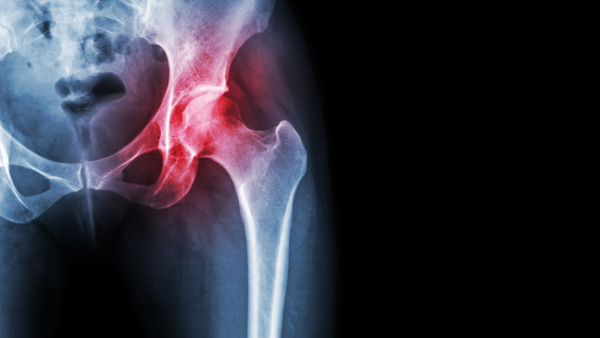
The hip joint
The hip joint consists of the acetabular cavity and the femoral head. The entire surface of the hip is covered with a smooth structure called articular cartilage that allows a smooth sliding movement.
In the practice of certain sports, mainly soccer, tennis and rugby, injuries can be produced being more frequent the sprains, the injuries of the labrum and injuries of cartilage.
Arthroscopy provides a non-aggressive way to treat problems within the joint with less tissue damage and faster, more comfortable recovery.
What is hip arthroscopy?
Arthroscopy is a surgical procedure that allows you to study, diagnose and treat problems in a joint. It consists of the introduction by puncture, in this case inside the hip, of an optical system with light source connected to a digital camera that allows visualizing intra-articular structures.
What are the most frequent injuries that hip arthroscopy treats?
Joint free bodies: small cartilaginous fragments that detach and damage the joint
Lesions of the glenoid imput or acetabular labrum
Lesions of the articular cartilage, which surrounds the head of the femur, causing irregularities in the contact surface between femur and acetabulum
How is the arthroscopic intervention of hip, knee, shoulder, ankle ...?
Arthroscopies are performed in the operating room with regional anesthesia of the extremities. The patient remains conscious for the duration of the procedure. The stay in clinic usually is of one day, although the progressive tendency is to realize them in regime of day hospital.
How is the postoperative of a hip arthroscopy?
The patient should walk on crutches for about 10 days. After that time, you can rejoin your daily activities. It is an aggressive and painless recovery.
What is a hip prosthesis?
A prosthesis is the artificial replacement of a joint that is injured or damaged by wear of the articular cartilage. The prostheses are manufactured in different materials: titanium, steel, polyethylene, ceramics ... depending on the component to which we refer. It is important to distinguish between bone anchoring material or friction material that allows movement. The prosthesis replaces the cartilage that the bone needs to be able to slide and move. Over time, the cartilage surrounding the head of the femur usually loses its hydration, drying and cracking in small fragments that are released and give rise to articular free bodies. These bodies cause pain and crunches, and in the long run usually lead to osteoarthritis.
For whom is a hip prosthesis indicated?
Candidates to receive a hip prosthesis are those who see their life clearly limited due to pain (difficulty sleeping for pain, changing habits in daily life ...), regardless of age. This is a subjective perception, so the patient himself, in collaboration with the specialist, is the one who knows best if it is time to implant a prosthesis or on the contrary it is advisable to delay the surgical intervention.
How is a hip prosthesis implanted?
In order for the prosthesis to be correctly placed and attached to the bone, the surgeon must conform and adapt the bone to the piece. This process is called anchorage. There are two ways to facilitate the anchorage of the prosthesis to the bone:
Form the bone so that the components of the prosthesis are perfectly tight to the bone, ie "uncured prostheses".
Use a "cement" that joins the bone and the prosthesis acting interphase and adapting the irregularities of the bone anatomy.
The use of one or the other technique depends on the age of the individual and the bone state or quality.
The procedure is performed with regional anesthesia of the legs. It lasts for about an hour and a quarter. The stay in the clinic varies between 3 and 5 days, and can be extended depending on the condition of each person.
How is the postoperative?
Patients receiving a hip prosthesis should wear crutches during the month following the procedure. Then they can return to normal life, although there is a disparity of criteria about sports practice. It is not advisable to perform contact sports (karate, judo, futsal ...). Going to the gym and practicing the rest of sports (bicycle, tennis, ski ...) does not have to pose any problem.
How long does a prosthesis last?
The prostheses have a limited life. Normally it is not necessary to change them although from 10 years may need a second surgery due to loosening of the prosthesis. The reasons for this loosening may be diverse:
- In the case of cemented prosthesis, loss of cement consistency
- Late infections, due to any possible secondary infectious site
- The so-called "polyethylene disease", caused by wear and tear due to rubbing of the prosthesis materials. Over time, small particles can be released that cause destruction or bone loss
- Therefore it is advisable to carry out periodic checks, normally the month, the year at 5 years and 10 years after implanting the prosthesis.


